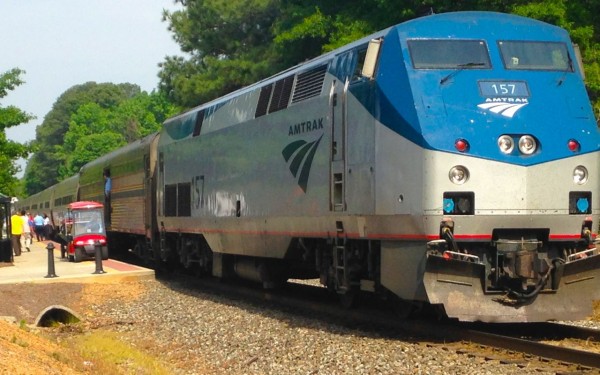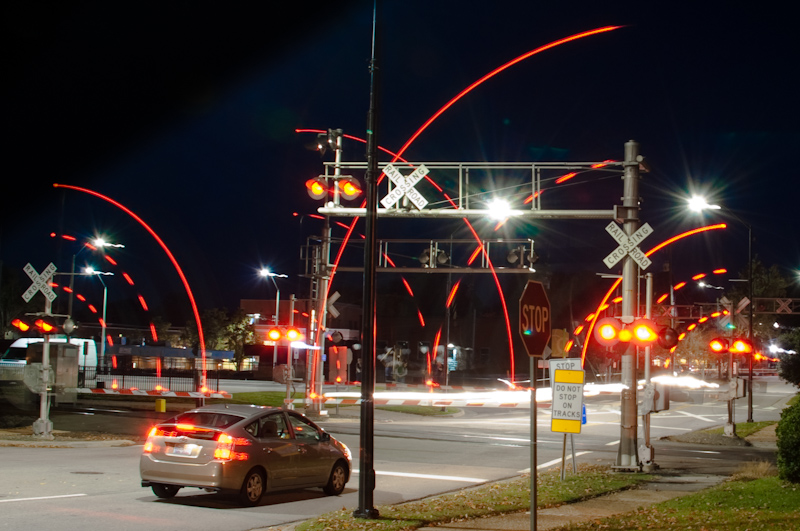Importance of Railroad Safety Often Overlooked
Cary, NC – More than 85 North Carolina counties have active railroad lines running through them. Yet, a lack of widespread information about rail safety and the laws surrounding railroad tracks leads to accidents and even fatalities every year.
Unaddressed Danger
Railroad tracks are hazardous areas. In 2015 alone, 29 people died in North Carolina on tracks and another 100 were injured. Despite this avoidable danger, people and especially children get little exposure to rail safety information.
“You’re not as aware of it. You see the police and fire department in schools but trains don’t have that publicity arm,” said Linda Tarsa, Owner and Placement Manager of College Nannies and Tutors in Cary.
As someone who works in education, Tarsa’s job involves working with children and reads publications on schools and safety initiatives.
“Surprisingly, there’s almost no one doing rail safety,” Tarsa said.
There is the BeRailSafe program through the state Department of Transportation and the non-profit Operation Lifesaver that both focus on rail safety. But while Tarsa said she hopes that information is getting out to the community, she said she does not see it being disseminated.
“I’m sure parents talk with their kids about it but they should be coming home with materials and information from school,” Tarsa said. “Cary had a Train Day last year. I was at those events and I don’t remember train safety being out there.”
What To Know
In North Carolina, 61 percent of elementary, middle and high schools are within two miles of a railroad crossing. If that was not enough of a reason to teach rail safety, Tarsa said the popularity of Pokémon Go, which has many users walking openly around their communities, is all the more reason to put importance on rail safety for people of all ages.
“It feels like a public space but it’s really not,” she said. Railroad tracks are private property and are hazardous.
For people who may want to use active railroad tracks for recreation or as a backdrop for photos, both of which are illegal, Tarsa said to seek out discontinued tracks.
Additionally, if you are walking and you need to cross over railroad tracks, only do so at intersections.
“Otherwise, you may not have sufficient warnings and they cannot stop quickly,” Tarsa said.
More railroad safety information is available on the NCDOT website.
Story by Michael Papich. Photos by Lindsey Chester and Hal Goodtree.





I don’t know that it is, but it seems like people will wait longer in line at McDonalds then they will for a train to pass a crossing. They seem to forget that if they try and beat the train and it’s a tie, the train always wins.
Things a real Operation Lifesaver would ask!!!
1. Why are all OL directors handpuppets of the railroad or government only giving lip service safety messages?
2. Why nothing is ever mentioned by OL that would cost the railroads a penny on the obviously missing safety equipment and track maintenance work?
3. Where are the crossing safety signals for the trains going too fast with no brakes or steering at 1,000s of crossings?
4. Where are the track video monitors for the trains going too fast with no brakes or steering to get the train stopped IN TIME?
5. Why aren’t railroads paying at least half for crossing signals because it’s their trains going too fast with no brakes or steering while paying the so-called RR directors millions a year.
6. Why the crossing humps trapping big trucks aren’t required to be removed?
7. Why the crossing surfaces aren’t wider where if a vehicle fish tails on slick road and is trapped at the edge of the crossing surface trap?
8. Why the train cabs aren’t required to be lit up like a Christmas tree with emergency vehicle light bars? LOOK AND SEE!!
9. Why the front of trains aren’t required to have air bags or something to soften impacts?
10. Why trains don’t have better braking systems? OLIs message now shows train brakes obviously suck.
11. Why there are no bidding invitations on the obviously overcharged crossing projects the tax-payers pay the railroads for. $10,000 just to get the equipment to the sight. TRUCKED IN.
12. Why trains are allowed to run in the fog?
13. Why the crossings aren’t lit up so drivers can see the black rail cars across the tracks at night?
14. Why railroads remove and steal signals we paid for on closed re-worked crossings?
15. Why $$$millions$$$ of the rail safety budget we pay in is wasted on needless reworks at crossings preventing signals where needed?
16. Why the railroad isn’t required to de-ice crossings before they roll the trains?
17. Why the railroad isn’t required to raise their overpasses so big trucks can get under them? The railroad wants to double stack and our road overpasses are too low—no problem WE PAY MILLIONS.
18. Why drug/alcohol tests aren’t done on rail crews at crossing/pedestrian collisions?
19. Why railroads are allowed to get off with the train black box , signal black box (if crossing signals are present), and cab video at crossing/pedestrian collisions?
20. Why the fact is hidden that trains kill like 100 people in 100 million train miles when regular drivers have like ONE death? Amtrak over 350 killed.
21.Why Amtrak passengers aren’t required to look at the despicable shape of the crossings before they board the trains?
22.Why train horns aren’t blown at private crossings till the last second freezing drivers?
23.Why the railroads track lights can’t be at a crossing?
24 .Why railroads need track lights and civilians don’t?
WAITING FOR OLI/OLI.CA response.